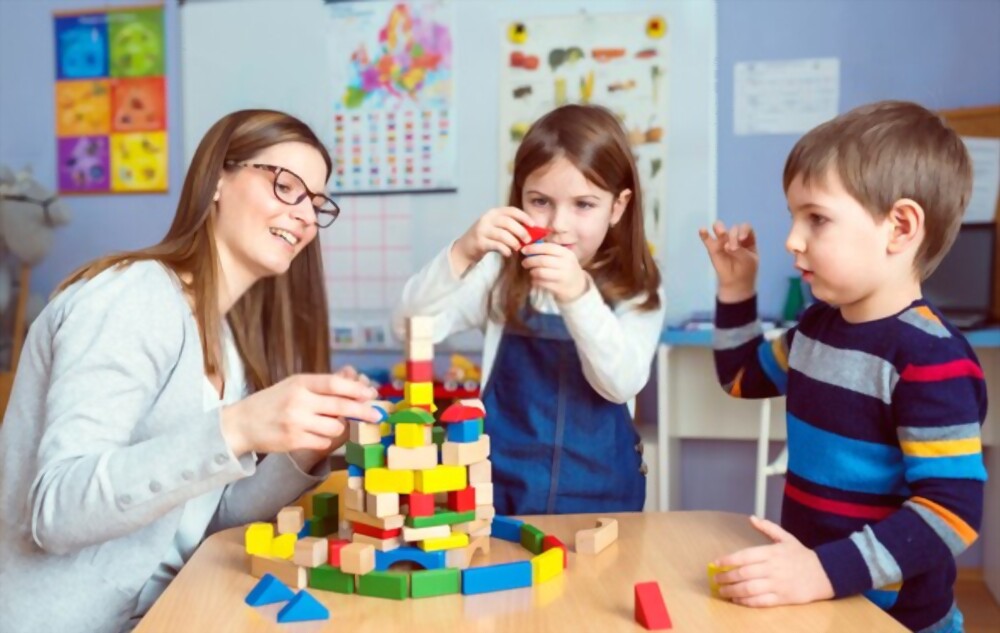
Creating a Blueprint for Success: Nurturing Growth in Special Education
In the realm of education, one of the most inspiring journeys is that of nurturing growth in special education. Every student is unique, and the field of special education recognizes and celebrates this diversity. Creating a blueprint for success in special education is not just a framework; it’s a guiding light that illuminates the path toward unlocking the full potential of every student. In this article, we’ll delve into the essential components of such a blueprint and explore how they contribute to the holistic development of students with diverse learning needs.
1. Understanding the Landscape of Special Education
Special education is a branch of education that caters to students with diverse learning requirements due to various disabilities or exceptionalities. Its primary objective is to provide tailored support that ensures equitable access to education and empowers these students to achieve their personal and academic goals. While special education can be immensely rewarding, it also presents its unique set of challenges, such as designing effective learning strategies for each individual while fostering an inclusive environment.
2. The Key Components of a Blueprint for Success
At the heart of any successful endeavor lies a well-structured plan. Special education is no different. A blueprint for success encompasses several crucial elements that work in harmony to create a nurturing learning environment for students with diverse needs:
3. Developing Clear Goals and Objectives
Setting clear, measurable, achievable, relevant, and time-bound (SMART) goals is fundamental in the special education journey. These goals serve as beacons guiding both educators and students towards the desired outcomes. For instance, a SMART goal might involve improving a student’s communication skills by a certain percentage over a specified period. These goals provide a tangible benchmark to measure progress and celebrate achievements, instilling a sense of accomplishment in both students and educators.
4. Crafting Effective Individualized Education Plans (IEPs)
Individualized Education Plans (IEPs) are the cornerstones of special education. An IEP is a personalized roadmap that outlines a student’s unique learning goals, strategies, and accommodations. Collaboratively developed by teachers, parents, specialists, and the student (when appropriate), IEPs ensure that every student receives tailored support. This collaborative approach fosters a sense of unity among stakeholders and promotes a holistic view of the student’s development.
5. The Power of Collaboration in Nurturing Growth
In the world of special education, collaboration is a superpower. The expertise of teachers, therapists, specialists, parents, and even the students themselves synergizes to create a holistic educational experience. Collaboration ensures that each facet of a student’s development is addressed comprehensively. Regular communication and information sharing among stakeholders enable the timely adjustment of strategies, ensuring that the student’s growth remains at the forefront.
6. Strategies for Implementing the Blueprint
Implementing the blueprint involves deploying a toolkit of effective strategies. Differentiated instruction techniques allow educators to tailor content and teaching methods to match each student’s learning style. Assistive technologies and resources bridge the gap for students with specific needs, enabling them to participate fully in the learning process. Regular progress monitoring and adjustments ensure that the blueprint remains a living document, adapting to the student’s evolving requirements.
7. Case Studies: Real-Life Examples of Blueprint Success
Real-life case studies provide tangible evidence of the blueprint’s effectiveness. Consider the story of Emily, a student with autism who, through a collaborative blueprint, not only improved her social interaction skills but also excelled in subjects she was passionate about. Such success stories reinforce the blueprint’s significance and inspire educators, parents, and stakeholders to continue their dedicated efforts.
8. Overcoming Challenges and Adapting the Blueprint
While a blueprint provides a solid foundation, challenges are inevitable. Adapting the blueprint to address challenges ensures its sustainability. For instance, the COVID-19 pandemic prompted a shift to virtual learning, requiring educators to innovate and find new ways to provide support. Flexibility is key to navigating unforeseen hurdles without compromising on the blueprint’s core principles.
9. Ensuring Long-Term Growth and Sustainability
Sustaining the blueprint’s impact requires continuous growth. Educators and professionals in special education should engage in ongoing professional development to stay updated on best practices and emerging research. By enhancing their skills, they can better serve their students, ensure the blueprint’s effectiveness, and contribute to the evolution of the field.
Conclusion
Creating a blueprint for success in special education is a journey that requires dedication, collaboration, and an unwavering commitment to nurturing growth. By understanding the unique needs of each student, setting clear goals, crafting individualized plans, and fostering collaboration, we pave the way for students to achieve their full potential. Let us embrace the power of a well-structured blueprint and continue to transform lives through inclusive and tailored education in the world of special education.
